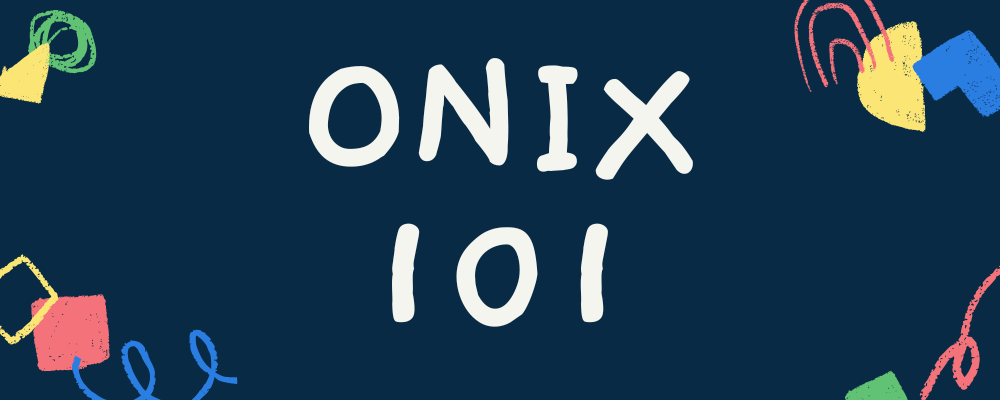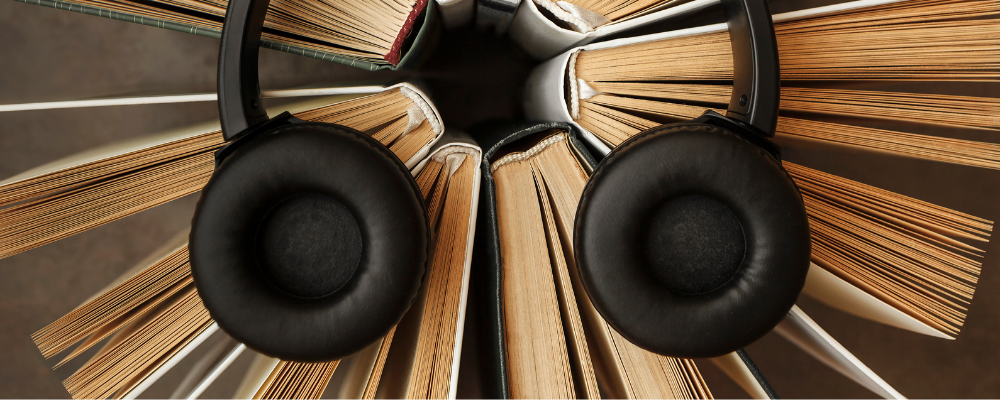In this month’s podcast episode, we’re bringing you some highlights from some of our fantastic sessions. This year’s programming had a mix of topics that ranged from crisis management, the impact of the pandemic on booksellers and publishers, bibliographic standards, diversity, equity and inclusion, and much more. The recordings from the sessions we’ll be talking about today are available on our YouTube channel — you can find the link in the episode notes.
(Scroll down for a transcript.)
Want to make sure you never miss an episode of the podcast? You can subscribe for free on iTunes, Stitcher, Pocket Casts, TuneIn, or SoundCloud.
Further reading/listening
Session 1: Come taste the difference good management can make in your crisis!
If we knew then what we know now: COVID-driven initiatives with staying power
Transcript
Nataly Alarcon: Hello BookNet Canada podcast listeners, I’m your host, Nataly Alarcón, the marketing associate at BookNet. Welcome to our April episode.
It was just a few days ago that we said goodbye to Tech Forum 2021, and to be honest, I miss being online interacting with speakers, listening to great conversations among industry leaders, and hearing attendees share their stories, challenges, and successes. Of course, what I miss the most is being together in person surrounded by bookish swag and delicious food — yes, I still think about the cheese table our wonderful caterers put together for the closing of Tech Forum 2019. But, for now, and while we all stay safe in our homes, I can tell you that attending Tech Forum sessions while wearing comfy sweatpants was not so bad either.
This year’s programming had a mix of topics that ranged from crisis management, the pandemic — from the booksellers, publishers, and associations perspective, bibliographic standards, diversity, equity and inclusion, and much more. And for today’s episode, we’re bringing you highlights from sessions that even if you were there, you most likely will want to watch again and again. Talking about re-watching: the recordings from the sessions we’ll be talking about today are available on our YouTube channel — you can find the link in the episode notes.
Okay, enough preamble. Let’s start with our 2019 returning speaker, Melissa Mack, and her session Come taste the difference good management can make in your crisis! In this two-day session, attendees learned how they can remove obstacles before a crisis strikes and respond with internal and external stakeholders at the fore.
Melissa Mack: What does an effective crisis management program require. So, I’ve broken this up into kind of three main bullets or three main ideas that building a good crisis management program requires. This is not an exhaustive list by any means. This is just how are we going to give you the tools that you need to start building a good crisis management program, and I say that, start building, but your organization may already have a crisis management program, in which case you can take what you learn from this session and hopefully use it to improve. Always our goal is to improve. There is no perfect crisis management program anywhere in the world. Every single one of them has room for improvement always and always will. In general, effective crisis management programs require executive buy-in and support. So, if your top level leaders in your organization do not care about the crisis management program, you're not going to have a very good crisis management program, so leadership must set and own the strategy. That does not mean that your CEO needs to be the leader of your crisis management team. Sometimes your CEO will not be the best leader for your crisis management team. We see this a lot, especially in larger companies that have a board of directors. Typically, the CEO will need to be available to sometimes serve as a spokesperson to the media. They’ll need to be able to communicate with the board of directors, and they may delegate the crisis response activities to a crisis management team. It may be other high-level leaders, other senior level leadership, but the CEO may or may not be a member of the crisis management team, but the CEO does need to be familiar with the program and make sure that it’s a priority for the company.
Cultural and organizational fit. There is no one size fits all approach for crisis management. There are certainly standards out there for crisis management, but the standards even that exist for crisis management are designed in a way to be implemented to fit your particular organization’s culture, organizational structure. We don't want to implement a crisis management team structure that is vastly different from your normal organizational structure because it’s not going to work in a crisis. We want to make sure that it as closely follows your inherent organizational structure as possible because, again, we want to try to eliminate as many obstacles as we can in advance, so we want to make sure that we create a crisis management team that matches very closely your organizational structure. The caveat there is there are some key roles that will need to be a part of the crisis management team, and you might have somebody, a C suite level person who owns, for example, human resources and communications, and that really needs to be two different people on a crisis management team because those are two very difficult challenging roles in a crisis, so you may need to adjust your crisis management team to make sure that you’ve got those really challenging roles to one person each. It’s very difficult to wear two hats in a crisis, and it’s not a good look. It’s just not fashionable. I’m sorry. That was a very dumb joke. Moira Rose can wear two wigs, but you can not wear two wigs in a crisis. Another Schitt's Creek reference.
Awareness and education. If your employees do not know that you have a crisis management program it does not do you much good. The example of the company that let their employees know that their priority in dealing with the pandemic was ensuring that everybody would still continue to have a job, I love that. That’s really, really good. That said, does every employee in your company need to be familiar with your plan? Does everybody in your company need to be a member of your crisis management team? No. Absolutely not. Unless your company is only three people and then maybe, but for most companies, you typically, every employee does not need to know every single detail of the crisis management program, the crisis management team, etc., but they should all be aware that there is a senior level leadership team that is designated to respond in a crisis, and they will need to know how to notify or report any potential issues. This is that idea that communication has to go multiple directions, especially in a crisis. You want to make sure that your crisis management program that you’re building allows for communication from the crisis management team to all employees and all stakeholder groups and vice versa. You want to make sure that all of that information about what's going on on the ground has a way to get efficiently and quickly up to the crisis management team
Nataly: There’s no doubt the pandemic and its impact was, and still is, in everyone’s minds. It was important for us to facilitate conversations in which industry leaders could come together to share what worked for them and what challenges they’re still facing. One of the sessions around this topic is If we knew then what we know now: COVID-driven initiatives with staying power with Athmika Punja from Penguin Random House Canada, Eulalee Lumsden from House of Anansi Press, Jamie Broadhurst from Raincoast Books, and Pam Estabrook and Dave Reynolds from Indigo. Here’s Eulalee talking about the ways House of Anansi is enhancing their book metadata to increase discoverability and how it became a key element now that the pandemic has forced book buyers to shop almost exclusively online.
Eulalee Lumsden: So of course, one of the biggest changes over the past year has been the lack of in-person browsing, so now that there are less opportunities to physically browse, readers are browsing online shelves a lot more and looking for recommendations that are similar to their interests. So, a good way to take advantage of that, of course, is by improving our metadata. So some of the ways that we've been doing that, is by improving keyword practices, expanding our long descriptions, and adding publishers own category codes to our ONIX. I know for a lot of us, we're already using keywords but we may not realize exactly how important these keywords are for discoverability, so our past approach to writing keywords was more of an “at off the top of our heads” approach, so now we're trying to make it more strategic and meaningful.
So on this slide, I have a chart with examples of some of the categories that we're now using in our new keyword worksheet to identify keywords and terms. So one of the categories that we have is key themes and topics, so the book that I have here for an example is Jump at Home Grade 3, which is a math workbook. So for key themes and topics we have STEM, homeschool, elementary school study materials, mental math, and EQAO. And then another category we have is educator, audience, and curriculum connections, so for that we have mathematics, and then we also have a category for media so for that we have Brain Quest, Kumon, and Common Core Aligned.
So, just having this has made the keyword process a lot more informed and purposeful.
So, along with revamping our keyword process, we have also expanded our descriptions to include key text features and common core standards. So having key text features outlined in our description helps the book buyer by knowing that the book comes with extra features that will help the reader engage with the text.
So an example here is one of our children's books called a Forest in the City and for key text features we have diagrams, author's note, glossary, sources, and definitions.
Some other things that could be in a book might be maps or illustrations so these are just some great things to highlight.
So we're also adding Common Core standards to our descriptions. So, what are common core standards? Common Core is a set of high-quality academic standards in mathematics and English language arts and literacy, these learning goals outline what a student should know and be able to do at the end of each grade.
So, for example, I'm going to use a Forest in the City again. So for Common Core standards, basically, in grade 2 a student should be able to know and use various texts and features to locate key facts or information in a text efficiently. And then for grade 3, a student should be able to ask and answer questions to demonstrate understanding of a text referring explicitly to the text as the basis for the answers, and another one in grade 3, a student should be able to determine the meaning of general academic and domain-specific words and phrases in a text relevant to a grade 3 topic or subject area.
So many of our children's titles will have these Common Core standards displayed in the description just to show the readers, the parents, the educators what they should be learning and how this text will align with that.
Nataly: Another session that touched on the pandemic and its challenges is Serving communities in crisis: The bookseller’s role. In it, Laura Ash from Another Story Bookshop, Shelley Macbeth from Blue Heron Books, and Catherine Ellsmere from Odin Books told us about the initiatives they’ve put in place, what the near future looks like for their bookstores, and more. Here’s Laura talking about how instrumental their online presence has been during the pandemic.
Laura Ash: So I guess one sustainable thing, the thing that I want to keep and I think we all want to keep in place — like myself and my colleagues — is trying to maintain the online presence. That was one thing that you know, if you would have asked me six months ago, I would have said no way. Like, as soon as we open, we're shutting our online store down. It's done, I'm done with it, we're not a warehouse. And I completely changed that. So that's one thing that we will try and do.
We will keep trying to work with the community to, you know, make it as accessible as possible. And we might phase out curbside pickups because we have just no room for curbside. If you can make it to the store, you know, then maybe that's something that we'll get rid of. But definitely major online presence I think is really important for us, which is something we never really had to think about before.
In terms of how our customers and the buying has changed, I mean buying for myself in the store I'm still — social justice and equity is still our focus and that is what is on our shelves. During this last year, the backlist — which you know we do carry certain backlist titles — but that has kind of you know — I do think it's again, anyone can order from us so we kind of became this general bookshop in people's minds where when you go onto our website, we have 12,000 titles in stock, but then you have every other book that's out there that you can get from us. So people, they might not see the books on our shelves that they want but they want to support us, so now they're ordering classics that we just don't have room for. Our classics section is this small. Anyone who's ever been to Another Story knows how how tiny we are, so we can't keep everything that we'd even want to keep anyways. So that was really interesting seeing those people just realizing that “Hey, I don't have to go to Amazon to to get this title, I can actually order it and my local bookshop can get it for me in about a week's time.” And so people were almost surprised by that — that we have that type of access. Which was something that I was pleasantly surprised that being more online was getting that information out there.
Nataly: Last year was no doubt a challenging one, but we think that the future holds great things for the industry, and the Moving pieces: Industry initiatives you don’t want to miss session was about just that: what’s coming next and how we can all help the industry move forward. We heard some great ideas from Deborah Nelson and Elizabeth Kraler from eBOUND Canada, Doug Minett from the Canadian Independent Booksellers Association (CIBA), Karina Urquhart from UK’s BIC, Jean-Benoît Dumais from Les librairies, and Nicole Duguay from James Lorimer & Company. Here’s Karina talking about how and why the International Green Book Supply Chain Alliance (GBA) was created.
Karina Urquhart: So, I think it's fair to say that the COVID pandemic has affected or blighted everyone's lives in one way or another. We've all had to learn to work differently, to live differently, and we quickly saw the impact that the crisis had and continues to have on our industry’s supply chain and consumer demand. And these market changes gave rise to a sharpened focus on the supply chain which delighted me, working for a supply chain organization. But also, we wanted to make sure at BIC that, you know, that heightened focus on the supply chain was also matched by a continued focus on environmental considerations as well. So on screen at the moment there is a quote from Jean-Pierre Krause from the Zurich Insurance Group from March 2021, pretty much supporting what I've said. I won't read through it, and I think the slides will be made available later.
Let's not forget that even with the pandemic, we are continuing to witness the rise of the ethical consumer. A recent online survey or a recent global survey of consumers found that 81% of respondents felt that, very strongly, that companies should help improve the environment, 73% would change their consumption habits to achieve that, and 46% said they would forgo a brand name in order to buy environmentally [friendly] products. So, clearly operating sustainably is something we all need to be addressing, both in terms of it being the responsible thing to do, but also in terms of potential business opportunity. So, for me, there are three areas of interconnected focus coming through: health of the planet, sustainable supply chains, both in terms of the environment and also in terms of agility, and resilience. We need our supply chains to be agile and resilient in order to survive not just this pandemic but future ones, dare I say it, and any other world events, geopolitical issues, etc. And then the third one I've just mentioned, the rise of the ethical consumer.
So, it was against this backdrop that in the Summer of 2020 I put the idea together I put the idea to the BISG and BookNet Canada about us joining forces to create an environmental alliance if you like. Because to me, it seemed like the obvious thing to do. After all, the book industry is a global industry, certainly, the supply chain is, and the health of the planet is obviously by definition a global concern.
Nataly: We also had the pleasure of hosting workplace culture strategist and career coach Keni Dominguez, in her session How to combat racial gaslighting in the workplace, Keni gives attendees tools to identify and combat racial gaslighting in the workplace.
Keni Dominguez: So let me tell you a story, let's say that there's some kind of dumpster fire situation at an organization, the company is losing revenue year over year or there can be a major crisis — and a lot of times there's some sort of scandal. So the board decides you know what, we're going to put a woman of colour or a person of colour or a white woman in charge. And initially, people are like yes, we're on the path, we're doing things, the company's making progress, and you're excited until it turns out it was just a trap.
It was a trap because that person was given an impossible task and nothing short of a miracle would have saved the organization, so what do you think happens to that person?
That person is blamed for the issue, they're forced out and then the board can just throw up their hands and say: see we tried, they're just not cut out for leadership or she couldn't handle the pressure.
And to make matters worse, the leader then can't get work at other places because they now have this stain or this blemish on their record. And I want you to know that this happens so often it has a name: the glass cliff. Do you know how often something has to happen to be given a name? Also, has anyone ever heard of this by the way? This phenomenon known as the glass cliff? Let me know in the chat, let me know if you're familiar with this. Okay, okay.
Okay, so we have a mix. Okay good, so we all learned a new term.
Yes it's really similar, glass cliff is really similar to glass ceiling, and so the difference here though, between glass cliff and the glass ceiling is that with the glass cliff, it's when women and other people of colour are promoted to high-level leadership positions, but the space that they have to stand on is so narrow — like at the edge of a cliff — and one wrong move or one false step and they're gonna fall off.
So they're essentially set up for failure. And you might be hearing this and thinking to yourself well why would a company, why would an organization want to set someone up for failure? And I'll tell you the reason. This happens is because we're considered expendable, we're better scapegoats for the organization.
Nataly: And that’s the end of today’s Tech Forum highlights, if these clips caught your attention, remember that you can find the full recordings in the BookNet Canada YouTube channel, feel free to watch at your own leisure and share the links with your colleagues and networks.
Before we go, we’d like to take a moment to acknowledge that BookNet Canada staff, board, and partners operate upon the traditional territories of the Mississaugas of the Credit First Nation, the Anishinaabe, the Haudenosaunee, Wendat, and Huron indigenous peoples, the original nations of this land. We endorse the calls to action from the Truth and Reconciliation Commission of Canada and support an ongoing shift from gatekeeping to space-making in the book industry. And we hope that our work, including this podcast, helps to create an environment that supports that shift. We'd also like to acknowledge the Government of Canada for their financial support through the Canada Book Fund. And of course, thanks to you for listening.














5 questions with Robyn York, the co-owner of Beach Reads Bookshop.